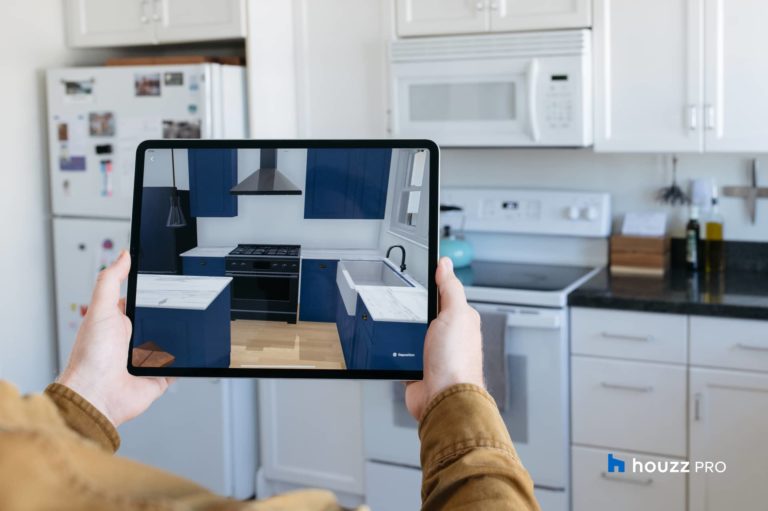
One company that’s received considerable accolades for AR commerce is Houzz. The home furnishings company offers AR to visualize products prior to purchasing. And its 11x boost in conversions from AR visualization is one of AR’s most cited data points.
But how did it get there? This all started as a 2D version of its now popular AR View in My Room feature. It used flat stickers for in-room furniture visualization. Though primitive, Houzz’ operational scale gave it large-sample signals by which to test and iterate features.
With just that 2D sticker, Houzz saw a 3x boost in conversions. This was enough to get it thinking about more spatially-advanced integrations. Notably, this was before Apple’s ARkit so like other AR pioneers at the time, it had to do considerable in-house development.
Fast forward several product cycles later, and Houzz was ready to hit the ground running when ARCore and ARkit were released in 2017. It was able to take all the work it did and integrate it with these new native libraries for positional tracking, scale, and light estimation.
More importantly, all that feature evolution taught Houzz an important lesson: AR needs to be in the shopping flow. It found through large-scale testing that AR features placed within users’ shopping paths – or what we call “AR as a Feature” – outperform standalone AR apps.
B2B2C
Doubling down on all the above, Houzz recently took steps towards more holistic AR experiences. Instead of just letting consumers virtually place individual items in their space through AR, why not transform entire rooms? Its new home renovation feature does just that.
Meant to empower designers and home renovation pros, it lets them break out their iPads when meeting with homeowners to visualize finished jobs. They can make design choices on the fly, then apply them live to AR-powered mockups and visualize them on-site.
Panning back, this accomplishes a few things. First, it broadens AR visualization. The technology has become popular for visualizing individual items, a la View in My Room. Houzz now positions AR to tackle entire renovation projects by visualizing results on a room-by-room basis.
The second thing this accomplishes for Houzz is “B2B2C”: a more accelerated path to consumer adoption through businesses that serve them. Those businesses are motivated adopters in that AR can give them a competitive edge and avoid downstream headaches like redoing work.
In other words, pros are better off with more informed and confident customer choices. This is analogous to AR’s ability to lessen product returns in eCommerce because of more confident choices. Home renovation pros could benefit from a higher-stakes version of that.
Organic & Additive
So what are the lessons for building AR shopping features? Houzz got to where it is by practicing iterative product cycles, following usage data, and reducing friction by integrating AR into existing shopping flows. It also created a back door to consumer adoption via B2B2C.
Another important tactic is to make AR intuitive. ARkit and ARCore provide a great foundation. But it’s just that: Some degree of customization is needed for optimal UX in specific product classes (think: couches versus flooring) which is a good lesson for any AR-curious retailers.
AR should also be easy to find, as users aren’t yet asking for it or going out of their way. It sees the most success when placed directly in users’ paths. It should also be integrated in ways that align with users’ comfort and cognition. So tap into established design languages.
For example, with transactional functionalities for AR visualization and shopping, the entire purchase funnel should happen all in one flow. It shouldn’t bounce users to another app or website to further browse products and transact. It should be simple and elegant.
All of this is important in AR’s early stages of consumer adoption when it isn’t yet proven enough to compel users to work for it. That means meeting them halfway by integrating AR in sparing ways that are organic and additive to the things they’re already comfortable with.






